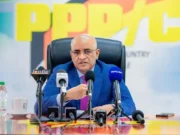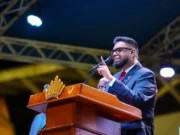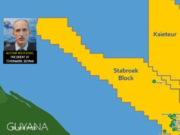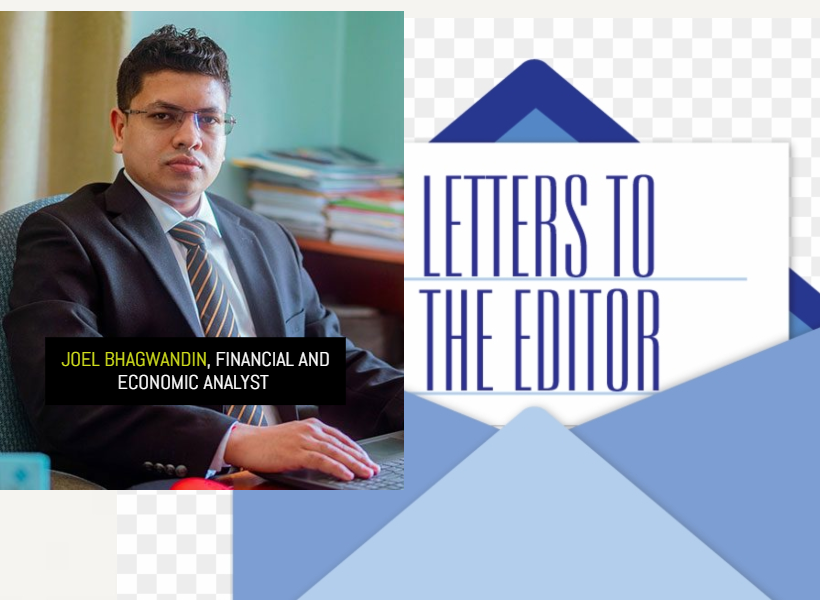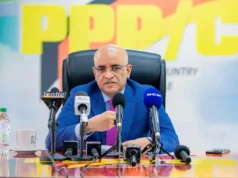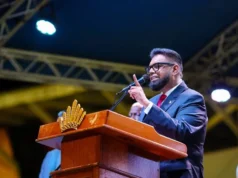Dear Editor,
What authority do Janette Bulkan and Andre Brandli have on the subject of the sale of carbon credits? Both individuals are affiliated with the infamous Oil and Gas Governance Network (OGGN), a foreign non-governmental organization established by a small group of anti-government activists.
The position of Bulkan supported by Brandli that the sale of carbon credit is fraudulent is preposterous. It is worthy of note that both individuals reside abroad, Janette Bulkan resides in Canada and Andre Brandli who is half Guyanese, resides in Germany. I doubt whether either of them ever dwelled among or lived among our indigenous people in the Hinterland Regions.
I am proud to say that unlike those two individuals, I did. I have lived and dwelled among our indigenous peoples for three and a half years back in 2013–2017. I was working with one of the largest commercial banks at the time that had established a branch in Region One, Port Kaituma. During my tenure there, I’ve worked with almost all of the Village Councils of that region to establish their bank accounts with the bank in close collaboration with the Ministry of Amerindian Affairs through which funds were disbursed from government subventions, inter alia, the Amerindian Development Fund. So, I am very familiar with the development activities, the needs of those Villages, and at a firsthand level, how the Village Councils operate.
Having established this important background, let me now respond to their letters dated July 5th, 2023, that was published in the Stabroek News. The following is restated from the Office of the President website: “Facts on Consultations and Land Tenure, Guyana ART Trees Programme”, published January 24th, 2023.
“The NTC is the national body that represents all Indigenous Villages in Guyana, as set out in the legislation that governs Indigenous Peoples matters in Guyana: The Amerindian Act 2006. Part IV, Sections 38-43 of the Act outline the Role and Functions of the National Toshaos’ Council. Toshaos and Village Councils (the wider body elected to manage the affairs of the village which is headed by the village Toshao) are elected at the village level in keeping with Part III of the Amerindian Act. Toshaos then represent their villages at meetings of the NTC.
Among the functions of the NTC as detailed in Part IV of the Amerindian Act, is to: “coordinate and integrate the activities of the villages on a national basis” as stated in Section 41 (h), and “to prepare strategies and plans for the protection, conservation and sustainable management of village lands and natural resources” as stated in Section 41 (e). By virtue of the provisions of Part IV of the Act including Section 41 (h), collectively these legislatively enshrine the powers of the NTC, to lead on, guide and endorse the LCDS and approach to carbon financing in Guyana. At the annual NTC Conference in July 2022, all elected Toshaos present (over 170 leaders in attendance) engaged with the LCDS team who joined discussions on the Strategy and plans for the next phase. These discussions included reviewing the output of the consultations and the process for, and progress on, issuing and marketing carbon credits. A resolution was passed, with no objection, endorsing the LCDS 2030 inclusive of all its elements while both the Government and the Chair of the NTC emphasized the need for Toshaos to stay involved as implementation of the LCDS moves ahead, village plans are prepared or updated, and new opportunities arise”.
The Carbon Credit transaction Guyana entered into with Hess Corporation is worth a minimum of US$750 million which is a multiyear agreement. Pursuant to the LCDS revenue sharing mechanism, 15% of that sum or US$112.5 million will be allocated directly to the Amerindian Communities through their respective Village Councils for the period 2016-2030. The budget allocation for the Ministry of Amerindian Affairs in 2022 was G$3.158 billion, inclusive of subventions towards the Amerindian Development Fund and other investments within the Amerindian Communities. The funds from the carbon credit sale by 2030 represents eight times the budget of the entire Ministry.
Prof Brandli argued that “these forests cannot be logged for wood, cleared for agricultural purposes, or cut down to gain land for settlements, roads, or other type of infrastructure. Hence, the Government of Guyana is selling a valuable asset, here the ability of trees on indigenous lands to absorb CO2 and offset carbon emissions elsewhere”. The learned professor is correct as he is essentially referring to the opportunity cost of utilizing these lands for alternative activities that may generate far more benefit to the Amerindian communities and its people, than the proceeds earned from carbon credit sale. But the question remains, would logging, for example, which is typically carried out by other entities with the resources to do so, directly benefit the Amerindian communities greater than the earnings derived from the sale of carbon credit?
Editor, can Janette Bulkan and Prof. Andre Brandli raise at least 1% of the total sum of the proceeds from the carbon credit sales―from any alternative sources for the Amerindian Communities?
I rest my case.
Yours sincerely,
Joel Bhagwandin
